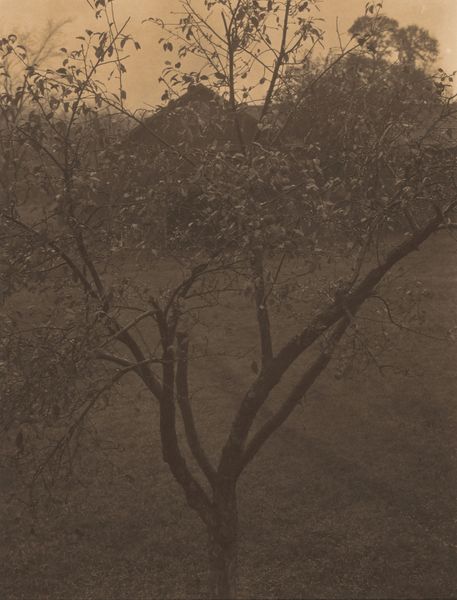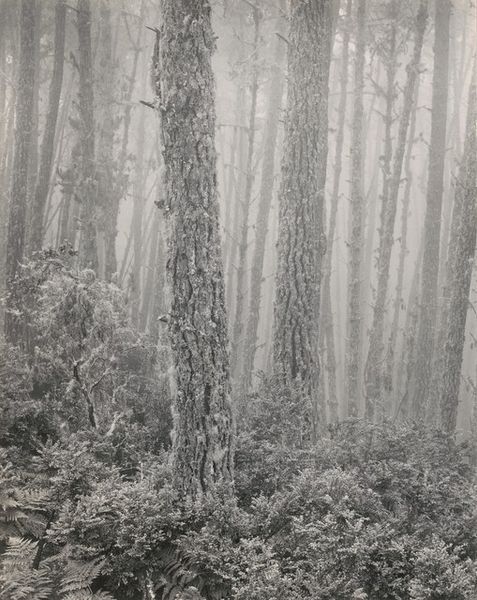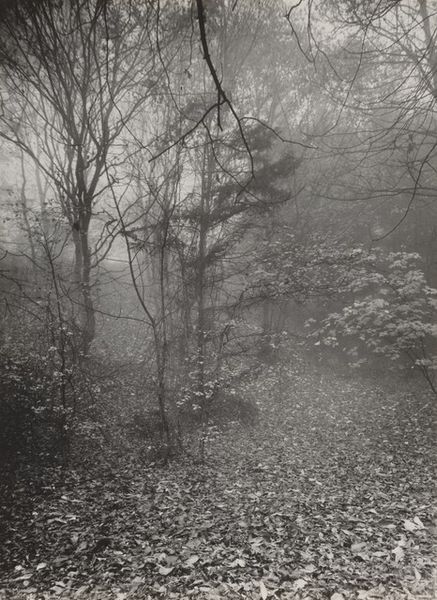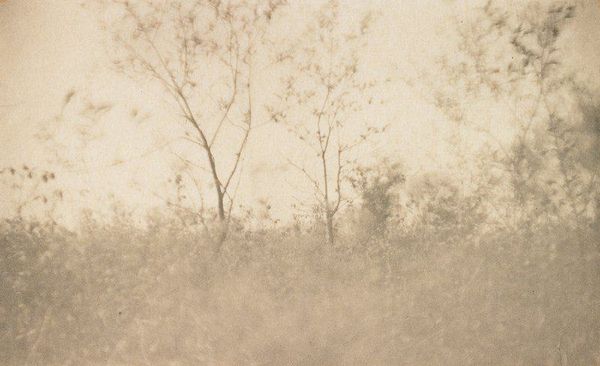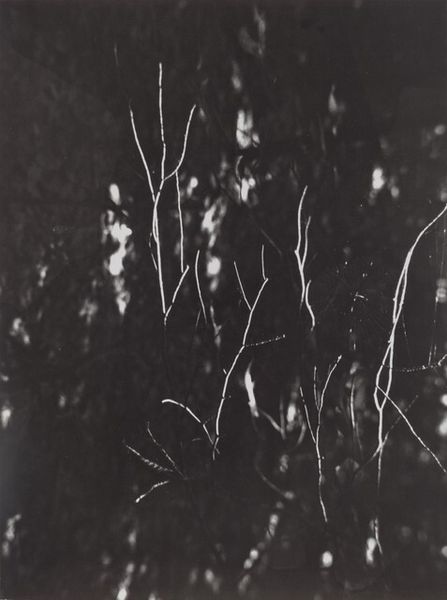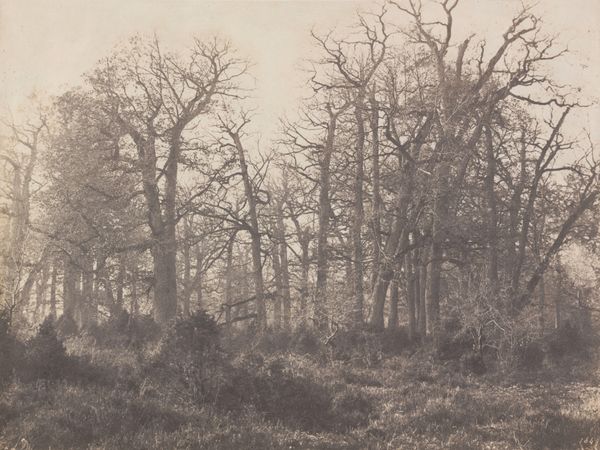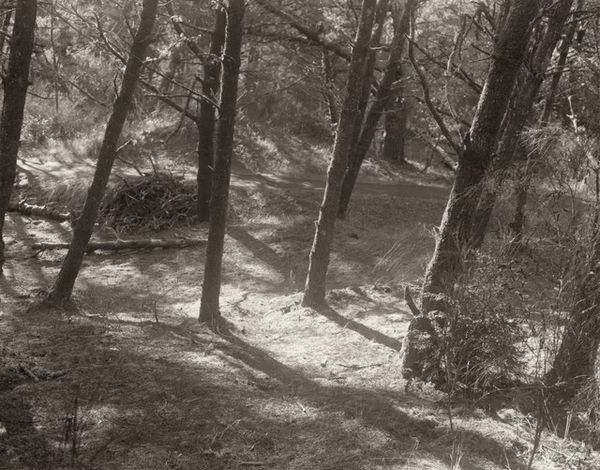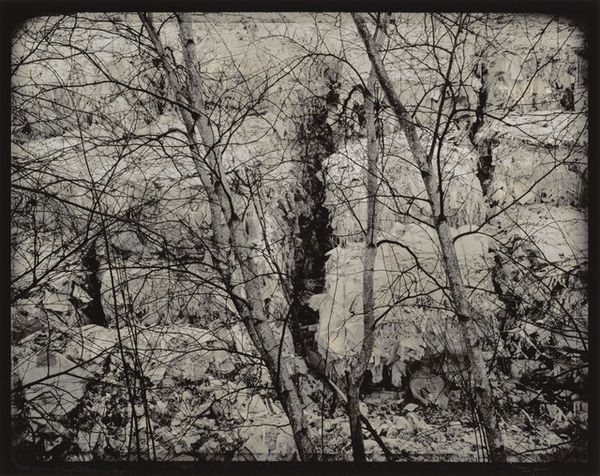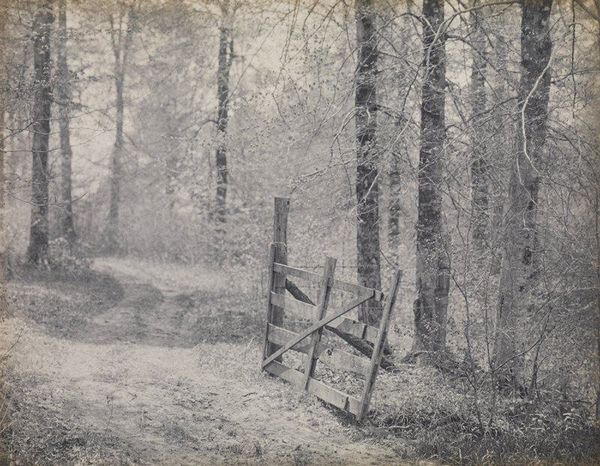
paper, photography
#
pictorialism
#
impressionism
#
landscape
#
paper
#
photography
#
fog
#
united-states
#
mist
#
monochrome
Dimensions: 9 5/8 x 7 1/2 in. (24.45 x 19.05 cm) (image)12 x 10 in. (30.48 x 25.4 cm) (mount)
Copyright: No Copyright - United States
William B. Post’s photograph, Forest Edge, now at the Minneapolis Institute of Art, presents us with a landscape rendered in soft, sepia tones. The composition is structured by the verticality of slender trees, their pale trunks sharply contrasting with the dense, shadowed undergrowth. This contrast pulls the eye upward, creating a sense of depth. Post’s approach to photography transcends mere representation. Instead, he uses tonal variation and careful framing to evoke a particular mood. The photograph seems to question the traditional dichotomy between clarity and obscurity, inviting us to explore the subtle boundaries between the visible and the hidden. Consider how the formal elements of line and tone create not just an image of a forest, but a semiotic space where nature's signs—trees, leaves, light—invite contemplation on the nature of perception itself. It is through this interplay of form and content that Post challenges us to consider the philosophical implications embedded within the photographic medium.
Comments
No comments
Be the first to comment and join the conversation on the ultimate creative platform.
